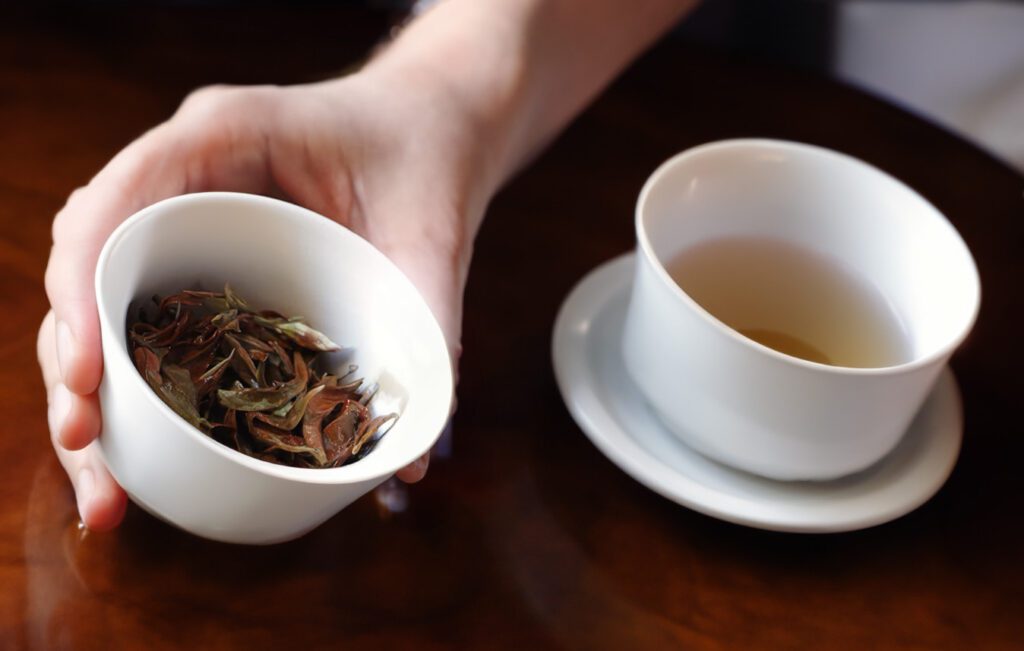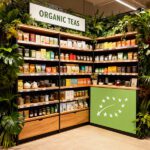In the world of tea, professional tasting is an essential skill for those that work in the industry. It allows us to determine the quality, flavour profile, and market value of different teas, as well as other nuances that can differentiate a common product from an exceptional one.
In this post, you’ll find a detailed and practical guide on how industry professionals conduct tea tastings, providing the necessary knowledge to improve and perfect this technique.
Preparing for a Tea Tasting | Preliminary Steps
Proper preparation of the tea is essential for an accurate and effective tasting. Every detail, from tea selection to the type of water used, can influence the final result and the taster’s ability to correctly evaluate the tea’s quality. Below are the key steps and considerations for an optimal preparation of tea for a professional tasting.
Equipment and Tools
Before starting the tasting, it’s important to have the right tools and equipment on hand, including:
- Precision Scale: needed to measure the exact amount of tea to be infused.
- White Porcelain Teapots: white porcelain allows an undistorted observation of the infusion’s color.
- White Porcelain Cups: like the teapots, the cups should be white to accurately evaluate the tea’s color.
- Timer: to ensure exact infusion times.
- Thermometer: to measure the water temperature, checking that it is suitable for the type of tea being tasted.
- Spoons: essential tools for slurping the tea properly, allowing a better perception of aromas and flavours during the tasting, while maintaining hygiene and avoiding contamination of the tea.

Tea Selection and Water Preparation
Selecting the tea is the first step. It’s recommended to use approximately 2.8 grams of tea per 100 ml of water, an amount that provides an infusion strong enough to reveal all the tea’s nuances.
The water used should be as pure as possible. Some companies opt to distill the water to ensure maximum consistency, which guarantees that the tasting evaluations are relevant and precise.
The water temperature is also important and should be adjusted according to the type of tea being tasted. For instance, green teas generally require water at about 70-80°C, while black teas need water at 100°C to infuse. Using the correct water temperature ensures that the tea infuses properly without burning the leaves.
How to Infuse Tea for Tasting
The following steps lead to a consistent and accurate infusion to conduct a professional tea tasting:
- Place 2.8 grams of tea in the white porcelain teapot.
- Pour the hot water over the tea leaves, making sure to cover them completely.
- Let the tea steep for six minutes. This time is longer than most consumers would allow, but is necessary to fully extract all the tea’s flavour compounds.
- After six minutes, tilt the teapot to pour the tea into the cup, leaving the infusion leaves in the teapot for later examination.
After following these steps correctly, you can proceed with the tea tasting.

Steps to Follow for Tea Tasting
Below are the essential steps every professional should follow to conduct an effective tasting, allowing for a thorough evaluation of the various aspects of the tea experience.
1. The Aroma
The first step in tea tasting is to analyse the aroma. Once the tea has been infused, smell both the infusion and the infused tea leaves. This process allows you to identify key aromas and possible defects, such as smoky or burnt smells.
2. The Appearance
The appearance of the infusion is another good indicator of the tea’s quality. High-quality teas usually have a bright and clear color, while lower-quality teas may present dull and cloudy tones. For black teas, coppery colors are preferable to brown or khaki tones, while green teas should display a vibrant and fresh color.

3. The Flavor
Flavor is the most complex aspect when it comes to tea tasting. To evaluate this indicator, a “slurping” technique is commonly used.
When analysing the tea’s flavour, three main components are considered: bitterness, astringency, and body.
- Bitterness: detected mainly at the back of the tongue and can indicate the presence of caffeine and other compounds in the tea.
A well-balanced tea may have a subtle bitterness that complements its other flavours, adding complexity. A pronounced bitterness can signal over-infusion or inferior tea quality. - Astringency: often confused with bitterness, this sensation is felt on the sides of the tongue and gums. Astringency is caused by polyphenols, specifically tannins, present in all tea varieties.
Astringency can add a dimension of freshness and cleanliness to the tea’s flavour, but it must be balanced with other characteristics to avoid being dominant or unpleasant. Well-balanced astringency can enhance the tea experience, while excessive astringency can indicate improper processing or an overly long infusion time.

- Body: the body of the tea refers to the sensation of weight, robustness, viscosity, and depth in the mouth.
Some teas, like Assams, have a heavy and enveloping body, providing a rich and robust sensation as opposed to green teas and other lighter varieties that offer a more delicate and ethereal sensation.
Evaluating the tea’s body helps understand how the different flavour and texture components balance each other. This is crucial for fully appreciating a high-quality tea.
Once these aspects are analysed, professional tasters often engage in a practice called “spitting,” where the tea is expelled rather than swallowed.
4. The Tea Leaves
The final step in a tea tasting is to examine the infused leaves placed on the lid of the white porcelain cup.
The leaves should be uniform in size and color, and should look fresh and well-formed to be considered indicators of a good tea.
The presence of golden or silver tips indicates high quality, as these come from the youngest part of the tea plant. Conversely, the presence of fibers or stems may indicate a lower quality. However, some teas like Japanese Kukicha, are specialised in the use of these components and are valued for their unique characteristics.

Conclusion
Tea tasting is a fundamental practice for industry professionals, involving preparation, evaluation, and detailed analysis of aroma, appearance, and taste. It helps appreciate the unique qualities of each tea, its quality, and its market potential.
Knowing how to conduct a good tea tasting not only helps professionals identify high-quality teas but also enhances product knowledge and the possible quality of potential blends and future products to sell in their business.
Therefore, understanding the product’s qualities through tasting allows for well-founded decisions about marketing a tea, benefiting both suppliers and consumers.
As tea wholesalers, the expert sommeliers at Alveus conduct regularly tea tastings to ensure that only the best products reach our clients. We rigorously analyse their flavour, aroma, and appearance to ensure that each batch meets the highest quality standards.
This commitment to excellence allows us to offer top quality teas, perfect for meeting the needs of our most demanding customers. If you wish to purchase some of our wholesale products, don’t hesitate to contact us.










